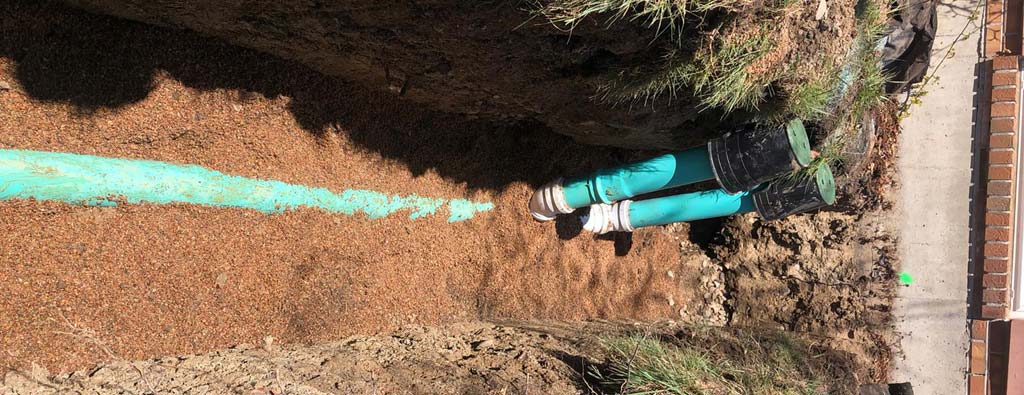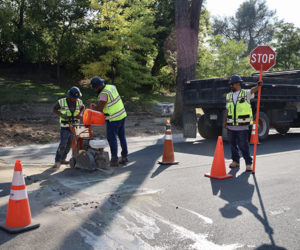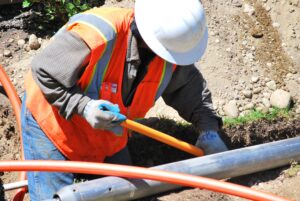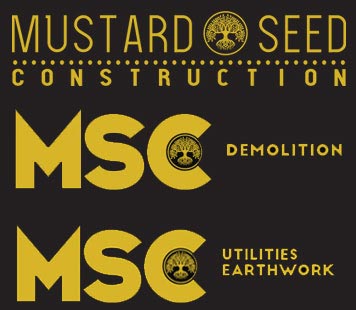Types of Sewer Pipes Every Homeowner Should Know
Your home’s sewer pipes carry waste away every day. But do you know what types of sewer pipes are under your property? Most homeowners don’t think about sewer line materials until problems start. Then they face big repair bills.
The types of sewer pipes in your home matter a lot. Different sewer pipe materials have different lifespans. Some types of sewer pipes last 50 years. Others fail in just 30 years. Knowing your sewer line materials helps you plan for the future.
At Sewerex, we work with all types of sewer pipes daily. We serve Denver homes and businesses. Our team has over 20 years of experience with sewer line materials. We’ve seen how different types of sewer pipes perform over time. So we know which sewer pipe materials work best.
This guide covers four main types of sewer pipes. You’ll learn about clay, PVC, cast iron, and Orangeburg sewer lines. Plus, we explain which sewer line materials last longest. Then you can make smart choices about your home’s sewer system repairs.
Table of Contents:
- Clay Sewer Pipes: The Old Standard
- PVC Sewer Pipes: Modern and Reliable
- Cast Iron Sewer Pipes: Heavy-Duty Classic
- Orangeburg Sewer Pipes: The Problem Material
- Comparing Lifespan of Sewer Pipes by Material
Clay Sewer Pipes: The Old Standard for Underground Lines
Clay sewer pipes were the top choice for decades. Most homes built before 1950 have clay sewer line materials. These types of sewer pipes are made from baked clay. Then they’re glazed to help water flow smoothly.
So how long do clay types of sewer pipes last? The EPA reports that clay sewer systems can work for 50 to 60 years. But many clay sewer line materials start breaking down sooner. Tree roots love clay sewer pipes. They grow into the joints between pipe sections.
Clay types of sewer pipes have some good points. They resist chemicals well. Drain cleaners won’t hurt clay sewer line materials. Plus, clay sewer pipes don’t rust like metal types.
Problems With Clay Sewer Line Materials
But clay types of sewer pipes also have big problems. First, they break easily. Clay sewer line materials crack when the ground shifts. Heavy vehicles driving overhead can crush clay sewer pipes.
Next, tree roots invade clay types of sewer pipes fast. The joints between sections let roots in. Once roots get into clay sewer line materials, they grow thick. Then your clay sewer pipes get clogged. Water backs up into your home.
Also, clay types of sewer pipes are heavy. This makes clay sewer line materials hard to install. Workers need special equipment for clay sewer pipes. Repairs cost more because of the weight.
Key Takeaway: Clay sewer pipes last 50-60 years but break easily and attract tree roots through their joints.
Expert Insight from Marisa Beaver, President of Sewerex: “We see clay sewer pipes in most older Denver homes. The biggest issue with clay sewer line materials is tree root invasion. Once roots get into clay types of sewer pipes, you need professional help. Our video inspection services show exactly where clay sewer pipes are failing.”
PVC Sewer Pipes: Modern Plastic Sewer Line Materials Win
PVC sewer pipes changed everything in the 1970s. These plastic types of sewer pipes are light and strong. PVC sewer line materials cost less than other options. Plus, PVC sewer pipes last a very long time.
Most new homes today use PVC types of sewer pipes. The lifespan of sewer pipes made from PVC is impressive. According to the Plastics Pipe Institute research, PVC sewer line materials can last over 100 years. That’s twice as long as clay sewer pipes.
PVC types of sewer pipes resist tree roots better than clay. The smooth joints in PVC sewer line materials keep roots out. Chemicals don’t damage PVC sewer pipes either. So drain cleaners are safe to use.
Why PVC Beats Other Types of Sewer Pipes
PVC sewer line materials are easy to install. They’re light, so workers move them quickly. This means lower labor costs for PVC types of sewer pipes. Plus, PVC sewer pipes connect with special glue. No heavy equipment is needed.
The smooth inside of PVC sewer line materials helps too. Waste flows easily through PVC types of sewer pipes. Clogs happen less often in PVC sewer pipes. When you do get a blockage, it’s easier to clear.
PVC sewer line materials also handle temperature changes well. They flex slightly when the ground freezes. This keeps PVC types of sewer pipes from cracking. Cast iron and clay sewer pipes can’t do this.
Pro Tip: Choose Schedule 40 PVC for residential sewer lines – it’s the perfect balance of strength and cost for most homes.
But PVC types of sewer pipes do have limits. Very hot water can soften PVC sewer line materials over time. Also, UV light from the sun damages exposed PVC sewer pipes. So always bury PVC sewer line materials completely.
PVC vs Cast Iron Sewer Pipe Comparison
Many homeowners ask about PVC vs cast iron sewer pipe options. Both types of sewer pipes work well. But PVC sewer line materials cost much less. Installing PVC types of sewer pipes is faster too.
Cast iron sewer pipes are quieter than PVC. Water flowing through cast iron sewer line materials makes less noise. But for underground use, this doesn’t matter much. Most sewer line materials are buried deep anyway.
The lifespan of sewer pipes matters most. PVC sewer line materials outlast cast iron types. PVC types of sewer pipes can reach 100 years. Cast iron sewer pipes typically last 50-75 years. So PVC sewer line materials win for longevity.
Cast Iron Sewer Pipes: Heavy-Duty Metal Sewer Line Materials
Cast iron sewer pipes dominated from 1900 to 1970. These metal types of sewer pipes are incredibly strong. Cast iron sewer line materials can handle heavy loads above ground. Many commercial buildings still use cast iron sewer pipes.
The lifespan of sewer pipes made from cast iron is good. Most cast iron sewer line materials last 50 to 75 years. Some cast iron types of sewer pipes reach 100 years. But this depends on water quality and soil conditions.
Cast iron sewer pipes have thick walls. This makes cast iron sewer line materials very durable. They won’t break if a car drives overhead. Cast iron types of sewer pipes also reduce noise well. Water flowing through them is quiet.
Downsides of Cast Iron Sewer Line Materials
But cast iron sewer pipes have serious problems too. First, they rust from the inside out. Water and waste corrode cast iron sewer line materials slowly. After 50 years, many cast iron types of sewer pipes have thin spots. Then they start leaking.
Next, cast iron sewer pipes are extremely heavy. This makes cast iron sewer line materials expensive to install. Workers need special equipment for cast iron types of sewer pipes. Labor costs are higher than with PVC sewer line materials.
Also, cast iron sewer line materials can collapse. As they rust, cast iron sewer pipes get weaker. The weight of soil above presses down. Eventually, old cast iron types of sewer pipes cave in. Then you need complete replacement.
Common Mistake to Avoid: Don’t assume cast iron pipes are fine just because they’re old – have them inspected after 50 years to catch problems early.
Tree roots also attack cast iron sewer pipes. They grow into joints between cast iron sewer line materials. Once roots get inside cast iron types of sewer pipes, they’re hard to remove. The rough, corroded inside of cast iron sewer pipes gives roots places to grip.
When Cast Iron Types of Sewer Pipes Make Sense
Despite the problems, cast iron sewer line materials still have uses. High-rise buildings often need cast iron sewer pipes. The types of sewer pipes in tall buildings must be very strong. Cast iron sewer line materials handle the pressure.
Also, some building codes require cast iron types of sewer pipes. Check local regulations before choosing sewer line materials. Your city might mandate cast iron sewer pipes for certain applications.
For most homes, though, PVC sewer line materials work better. They cost less than cast iron types of sewer pipes. Plus, PVC sewer pipes last longer and resist corrosion.
Orangeburg Sewer Pipes: The Problematic Fiber Sewer Line Materials
Orangeburg sewer pipes were popular from 1945 to 1972. These unusual types of sewer pipes are made from wood fibers. Manufacturers mixed the fibers with tar. Then they pressed everything into pipe shapes.
Why did builders use Orangeburg sewer line materials? After World War II, metal was scarce. Orangeburg types of sewer pipes filled the gap. They were cheap and easy to install. Thousands of homes got Orangeburg sewer pipes.
But the lifespan of sewer pipes made from Orangeburg is terrible. Most Orangeburg sewer line materials fail in 30 to 50 years. Many Orangeburg types of sewer pipes collapse even sooner. Today, experts consider Orangeburg sewer pipes a serious problem.
Why Orangeburg Sewer Line Materials Fail Fast
Orangeburg sewer pipes have major weaknesses. First, they absorb water over time. Wet Orangeburg sewer line materials become soft. Then the types of sewer pipes start to sag. Eventually, Orangeburg sewer pipes collapse completely.
Next, tree roots easily penetrate Orangeburg sewer line materials. The soft fiber allows roots to push through. Once inside Orangeburg types of sewer pipes, roots grow fast. This blocks the entire Orangeburg sewer pipe system.
Also, Orangeburg sewer pipes deform under pressure. The soil weight above flattens Orangeburg sewer line materials. This changes the shape of these types of sewer pipes. Water can’t flow properly through deformed Orangeburg sewer pipes.
What This Means for Homeowners: If your home was built between 1945-1972, you likely have Orangeburg pipes that need replacement soon.
Chemicals damage Orangeburg sewer line materials too. Strong drain cleaners eat away at Orangeburg types of sewer pipes. Even normal sewage breaks down Orangeburg sewer pipes over time. The tar coating wears off Orangeburg sewer line materials.
Signs Your Home Has Orangeburg Sewer Line Materials
How do you know if you have Orangeburg types of sewer pipes? First, check when your home was built. Houses from 1945 to 1972 often have Orangeburg sewer line materials. Second, look for frequent backups. Collapsing Orangeburg sewer pipes cause constant drain problems.
Slow drains throughout your home signal Orangeburg sewer line materials too. As Orangeburg types of sewer pipes deform, water flows poorly. Also, you might see soggy spots in your yard. Leaking Orangeburg sewer pipes create wet areas above them.
If you suspect Orangeburg sewer line materials, get an inspection fast. Our team at Sewerex uses camera inspection technology to check types of sewer pipes. We can see if you have failing Orangeburg sewer pipes.
Replacing Orangeburg Types of Sewer Pipes
Don’t wait if you have Orangeburg sewer line materials. These types of sewer pipes will fail. It’s not a question of if but when. Replacing Orangeburg sewer pipes now prevents bigger problems later.
Modern replacement options beat Orangeburg sewer line materials completely. PVC types of sewer pipes are the best choice. They last three times longer than Orangeburg sewer pipes. Plus, PVC sewer line materials resist all the problems that destroy Orangeburg types.
At Sewerex, we specialize in replacing old sewer lines. Our trenchless methods can replace Orangeburg sewer line materials without tearing up your yard. We’ve helped hundreds of Denver homeowners upgrade from Orangeburg types of sewer pipes to modern PVC sewer line materials.
Comparing Lifespan of Sewer Pipes by Material Type
Understanding the lifespan of sewer pipes helps you plan ahead. Different types of sewer pipes have very different life expectancies. Let’s compare all the major sewer line materials side by side.
Clay sewer pipes last about 50 to 60 years. But tree roots often damage clay sewer line materials sooner. Ground movement can crack clay types of sewer pipes early too. So actual clay sewer pipe lifespan varies a lot.
PVC sewer line materials have the longest lifespan. These modern types of sewer pipes can last over 100 years. PVC sewer pipes resist corrosion completely. Plus, PVC sewer line materials handle ground movement well.
Cast Iron and Orangeburg Sewer Pipe Lifespans
Cast iron sewer pipes typically last 50 to 75 years. Some cast iron sewer line materials reach 100 years in perfect conditions. But rust shortens the life of most cast iron types of sewer pipes. Water quality affects how long cast iron sewer line materials survive.
Orangeburg sewer pipes have the shortest lifespan by far. Most Orangeburg sewer line materials fail in 30 to 50 years. Many Orangeburg types of sewer pipes collapse even sooner. No Orangeburg sewer pipe should still be in use today.
Expert Insight: The lifespan of sewer pipes depends on installation quality too. Properly installed PVC or cast iron sewer line materials last much longer. Poor installation can cut the life of any types of sewer pipes in half.
Factors That Affect Sewer Line Materials Lifespan
Several things change how long types of sewer pipes last. First, soil conditions matter. Acidic soil corrodes some sewer line materials faster. Clay and cast iron sewer pipes suffer most from bad soil.
Next, tree roots impact the lifespan of sewer pipes significantly. Large trees near sewer line materials cause problems. Roots seek water in all types of sewer pipes. Clay and Orangeburg sewer pipes are most vulnerable.
Also, how you use your sewer line materials affects their life. Flushing harsh chemicals damages some types of sewer pipes. Orangeburg sewer line materials break down fastest from chemical exposure. PVC sewer pipes handle chemicals best.
The quality of installation matters too. Well-installed types of sewer pipes last their full expected life. But rushed work shortens sewer line materials lifespan. Always hire experienced pros for any sewer pipe work.
Conclusion: Choose the Right Sewer Line Materials for Your Home
Now you know about all the major types of sewer pipes. Clay sewer line materials were the old standard. PVC types of sewer pipes are the modern choice. Cast iron sewer pipes offer durability. And Orangeburg sewer line materials should be replaced immediately.
For new installations, PVC sewer pipes make the most sense. These sewer line materials last longest and cost least. The lifespan of sewer pipes made from PVC beats all other types. Plus, PVC sewer line materials resist the problems that plague other sewer pipes.
If your home has old clay or cast iron types of sewer pipes, plan for replacement. These sewer line materials have served you well. But after 50 years, all sewer pipes need upgrading. Don’t wait until they fail completely.
Most importantly, get your sewer line materials inspected regularly. Knowing which types of sewer pipes you have helps you prepare. Then you can budget for replacement before problems start.
Ready to Upgrade Your Old Sewer Pipes?
At Sewerex, we work with all types of sewer pipes daily. Our team has replaced thousands of sewer line materials across Denver. We know which sewer pipes work best for Colorado homes. Plus, our trenchless methods save you money on installation.
Don’t wait until your old sewer line materials fail. Schedule your sewer inspection today. We’ll check which types of sewer pipes you have. Then we’ll recommend the best sewer line materials for your situation. Our 5-year warranty covers all sewer pipe work.
Call Sewerex now at (720) 663-7473. We serve Denver and all surrounding areas. Let us help you choose the right types of sewer pipes for your home. Your sewer line materials are too important to ignore.
Frequently Asked Questions About Types of Sewer Pipes
What are the most common types of sewer pipes in older homes?
Older homes typically have clay or cast iron sewer line materials. Homes built before 1950 usually have clay sewer pipes. Houses from 1950 to 1970 often have cast iron types. Also, homes from 1945 to 1972 might have Orangeburg sewer line materials. So you should get an inspection to confirm which sewer pipes you have.
How long does PVC pipe last compared to other sewer line materials?
PVC sewer pipes can last over 100 years with proper installation. This beats clay sewer line materials by 40-50 years. PVC also outlasts cast iron types of sewer pipes by 25-50 years. Plus, PVC sewer line materials last three times longer than Orangeburg sewer pipes. So PVC is the longest-lasting option for residential sewer lines.
What causes cast iron sewer pipes to fail over time?
Cast iron sewer line materials rust from the inside out over decades. Water and waste corrode these types of sewer pipes slowly. After 50 years, thin spots develop in cast iron sewer pipes. Tree roots also invade through corroded joints in cast iron sewer line materials. Plus, the weight of soil eventually crushes weakened cast iron types of sewer pipes.
Should I replace Orangeburg sewer pipes even if they’re working?
Yes, replace Orangeburg sewer line materials as soon as possible. These types of sewer pipes are already past their expected lifespan. Orangeburg sewer pipes can collapse suddenly without warning. So waiting for problems costs more in emergency repairs. Modern PVC sewer line materials are much more reliable and last decades longer.
When should I call a professional about my sewer line materials?
Call a sewer pro if you notice slow drains in multiple fixtures. Also, contact experts when you see soggy spots in your yard. Sewage smells inside or outside mean your types of sewer pipes need inspection. Plus, if your home is over 50 years old, schedule a professional video inspection of your sewer line materials. Early detection saves thousands in repair costs.
Step-by-Step Guide: How to Check Your Sewer Pipe Type
How to Identify Which Types of Sewer Pipes You Have:
- Check your home’s building records for sewer line materials documentation
- Look at your home’s construction year to narrow down pipe types
- Inspect any exposed sewer pipes in your basement or crawl space
- Note the color and material of visible sewer line materials
- Call a pro for video camera inspection of buried sewer pipes
- Review inspection footage to see exact types of sewer pipes underground
- Ask the technician about the condition of your sewer line materials
- Get a written report on your sewer pipe type and condition
- Discuss replacement options if you have failing types of sewer pipes
- Plan your budget for upgrading old sewer line materials to modern PVC
Quick Reference: What Are Types of Sewer Pipes?
Types of sewer pipes are the different materials used for underground waste lines. The four main sewer line materials are clay, PVC, cast iron, and Orangeburg. Clay sewer pipes were used before 1950 and last 50-60 years. PVC types of sewer pipes are modern plastic that lasts 100+ years. Cast iron sewer line materials are heavy metal pipes lasting 50-75 years. Orangeburg sewer pipes are fiber-based and only last 30-50 years. Each type has different strengths and weaknesses for residential sewer systems.







